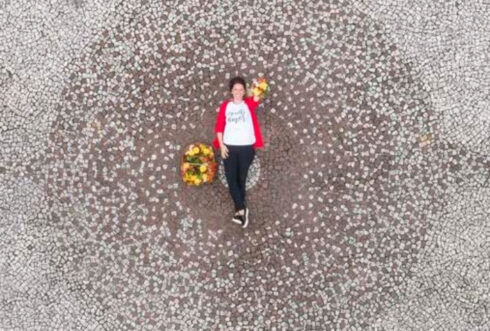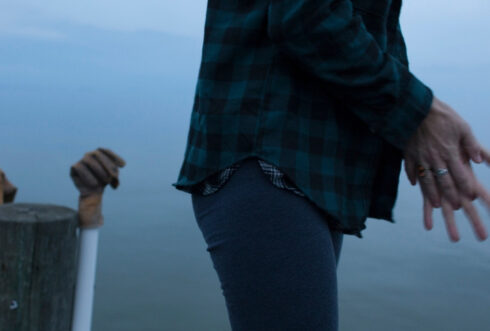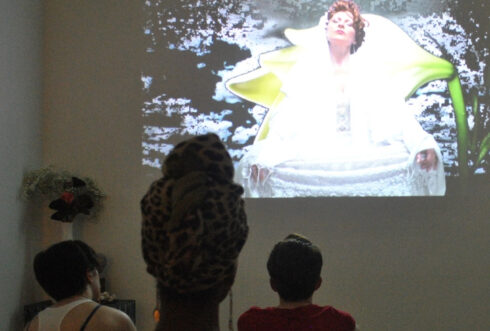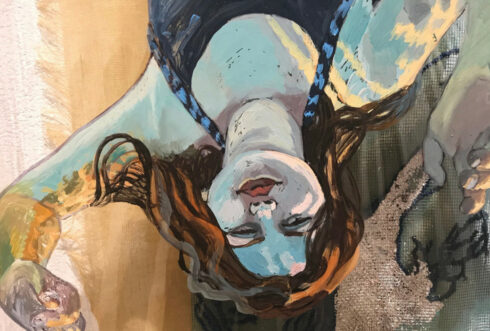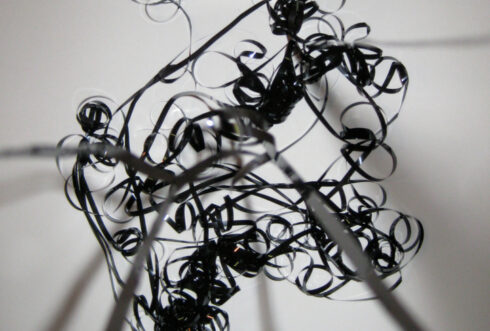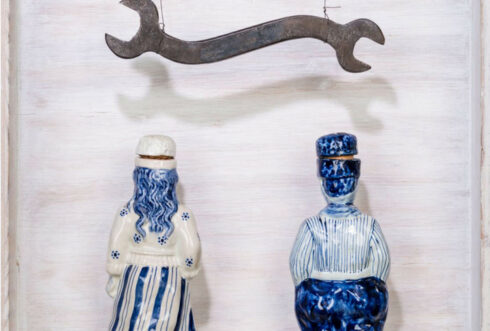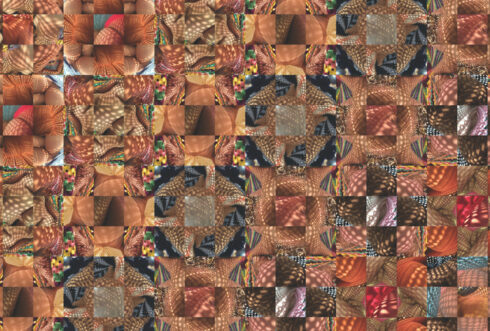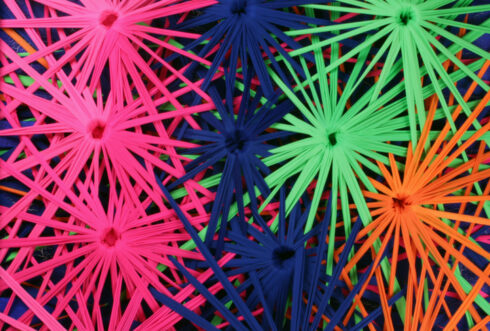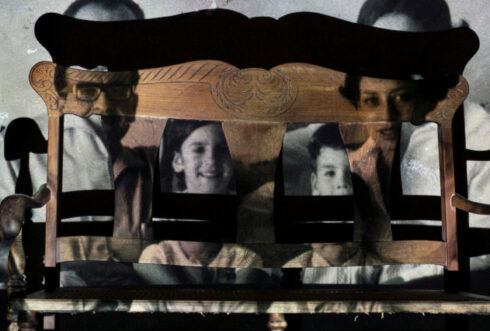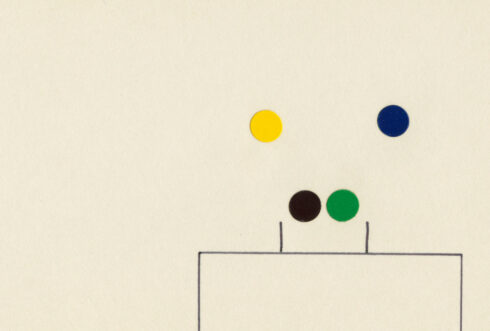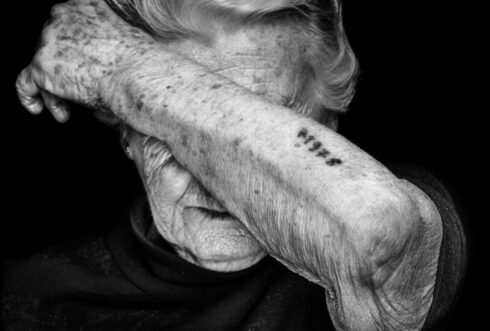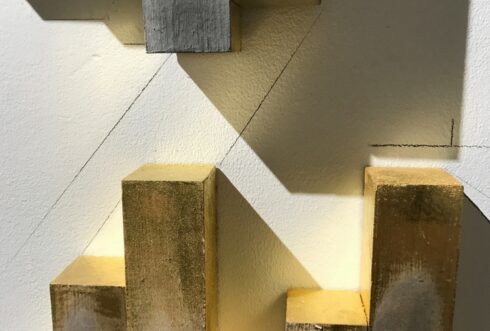Damon Arhos
I Love To Hate You
August 3 – September 2, 2018
What does it mean to concurrently love and hate something? To experience physical and emotional attraction and repulsion at the same time? How is it confusing to be affirmed and reviled? This disorienting state of affairs embodies the artworks in this installation: “The Antidote,” “Yesterday’s 30,” and “Trapped.”
The Antidote pays homage to Andy Warhol, who in the 1960s, used silkscreen prints to spotlight iconic American objects, among them electric chairs used to
execute those criminals sentenced to death. Today, two antiretroviral medications—tenofovir disoproxil and emtricitabine—combine to form a drug used to treat and prevent HIV infection. Sold under the brand name Truvada, the blue pills are taken orally. Although many at high risk for the disease take the medication for prevention (for pre- or post-exposure prophylaxis or PrEP/PEP), it does not offer a cure. I intend for these hand-painted, decommoditized halftones to reinvigorate and reemphasize many of the global issues connected to HIV/AIDS today. Most importantly, I want to accentuate the unjust stigma and shame that those who are infected or who may take Truvada as a preventative experience.
Yesterday’s 30 mourns the tragic loss of 30 transgender people in the United States in 2017. In an age when compelling gender issues are receiving renewed
attention, it is clear that many who authentically express their gender identity are forgotten. Further, as the LGBTQ media advocacy organization GLAAD reports, “Transgender people, particularly transgender women of color, face shockingly high rates of murder, homelessness, and incarceration. Most states and countries offer no legal protections in housing, employment, health care, and other areas where individuals experience discrimination based on their gender identity or expression.” I use Super 8 motion picture film for this installation— vintage technology that demonstrates the tenuous relationship between progress and regression.
Trapped offers an attractive dichotomy for each viewer: the rich allure of a lustrous surface versus the intended use for its materials. Rat traps are devices that contain their own narratives. While many find rodents to be frightening creatures, the traps themselves exhibit an inherently minimal and functional existence. Yet, who isn’t attracted to a shiny, bright red surface? What if the objects themselves simultaneously evoke suspicion or uneasiness or dread? I use this metaphor to describe the confusion that many LGBTQ Americans feel when confronted both with embrace and disdain. I combine these mundane objects into a tower—a symbol of strength and power—in order to confront and contradict discrimination, and to reclaim dignity and pride.
Damon Arhos (b. 1967) presents I Love To Hate You as an extension of his art practice, which seeks to expose the destructive nature of prejudice and
uses his identity as a gay American as its frame.
A native of Austin, Texas, Arhos explores how individual experiences influence gender roles, sexual orientation, and human relationships. This process questions stereotypes and assumptions that discourage individuality. Further, it investigates the implications of concurrent affirmation and rejection within disenfranchised communities. His interest in portraiture has developed with diverse expressions of the self as well as of historical figures who have overcome inequity.
A graduate of Maryland Institute College of Art in Baltimore with an MFA in Studio Art, Arhos lives and works in the Washington, DC metro area.

